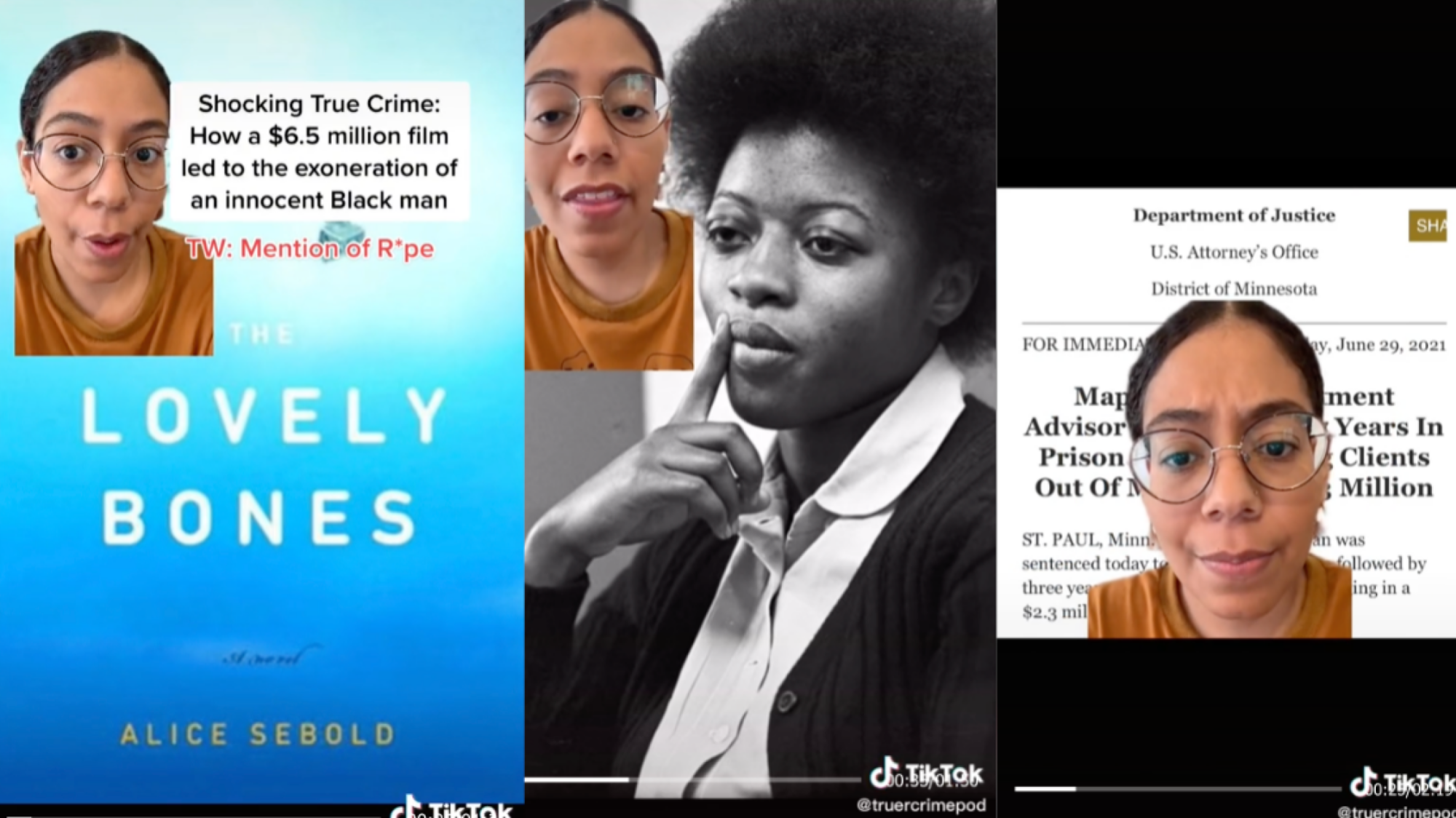
What can you do in a three-minute TikTok video? It turns out that the answer is basically anything: restock a refrigerator, tell people what to read, remind viewers that retail workers are humans, let someone know their partner is cheating, and so much more. For better or for worse, that includes true crime media.
From creators who don’t cite their sources to those who stereotype the victims of crimes, all the way to overlooking or attempting to erase the realities of police violence, misogyny, racism, and other systemic issues, the toxicity alive in true crime media seems relentless. The good news is that ethical, analytical, and victim-centered true crime TikTokkers exist, and here are 10 of the best from 2022.

Credit: Screenshot TikTok/ @TruerCrimePod
Celisia Stanton is the creator of the podcast Truer Crime, in which she examines tales of, yes, true crime, with nuance that’s frequently omitted from more salacious coverage. On her TikTok, she calls out the white-washed, pro-cop, true-crime media and how it affects the way we think about high-profile cases, such as that of Susan Smith. Specifically, Stanton illustrates how the media conveniently edited out that Smith falsely accused a Black man of carjacking her and kidnapping her two children before admitting that she’d actually murdered them herself — a phenomenon that’s resulted in the targeting and deaths of Black men for decades. Also, check out her series on Jonestown, which reveals many details you probably didn’t know about the massacre, including the fact that 70% of the 909 people who died were Black people, and mostly women and children.
SEE ALSO: Meet the true crime podcaster making your guilty pleasure more ethical
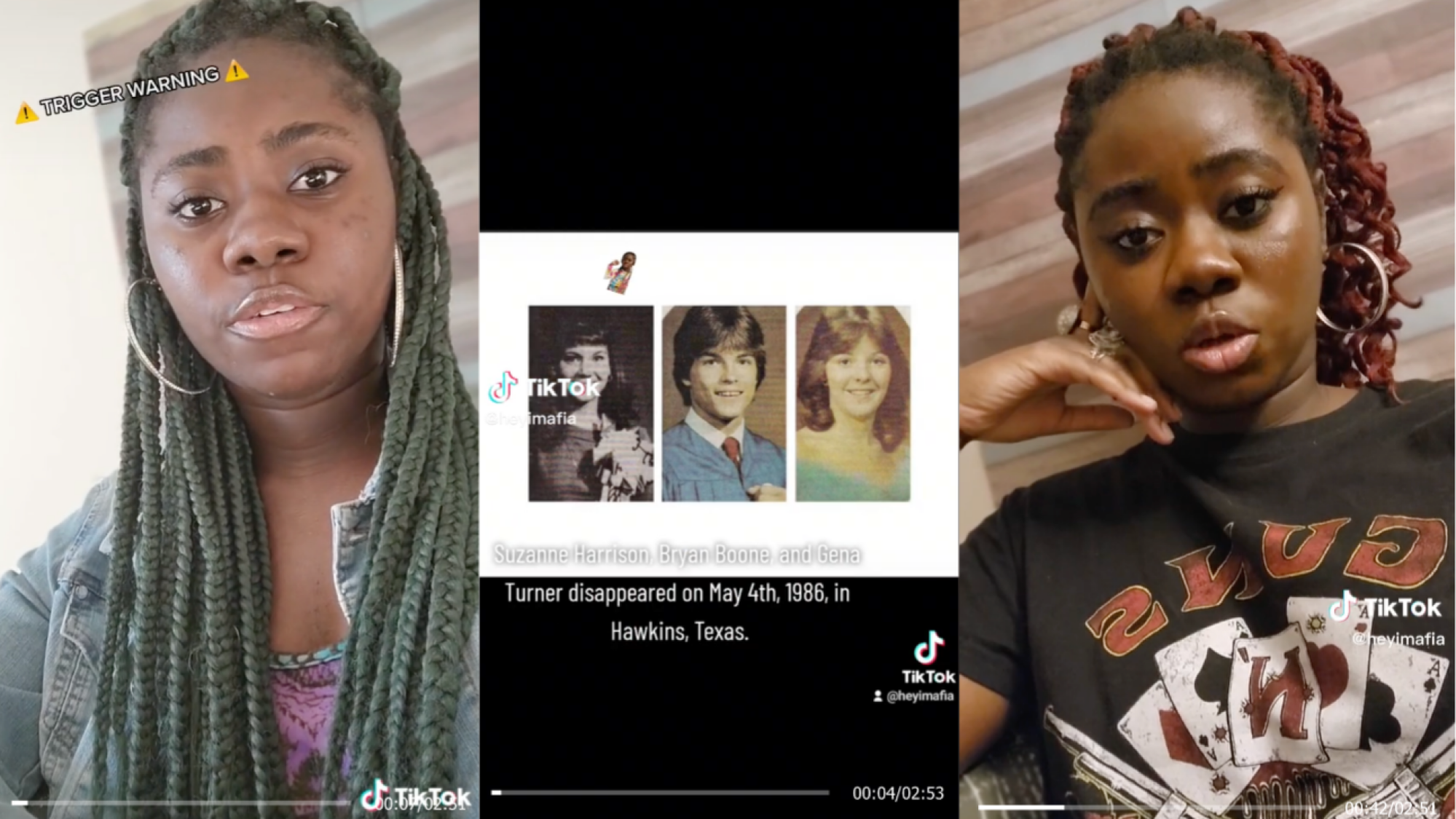
Credit: Screenshot TikTok/ @HeyImAfia
Afia Asamoah “sits in a chair and talks,” and you will be glad you visited her corner of TikTok. Come for the “Spark Notes Storytime.” Stay for the superbly placed swear words, as well as her musings on polygraph tests, police errors, and what it takes for law enforcement to pay attention to the cases of missing and murdered people of color, and how much true crime a person can responsibly consume without glamorizing it.
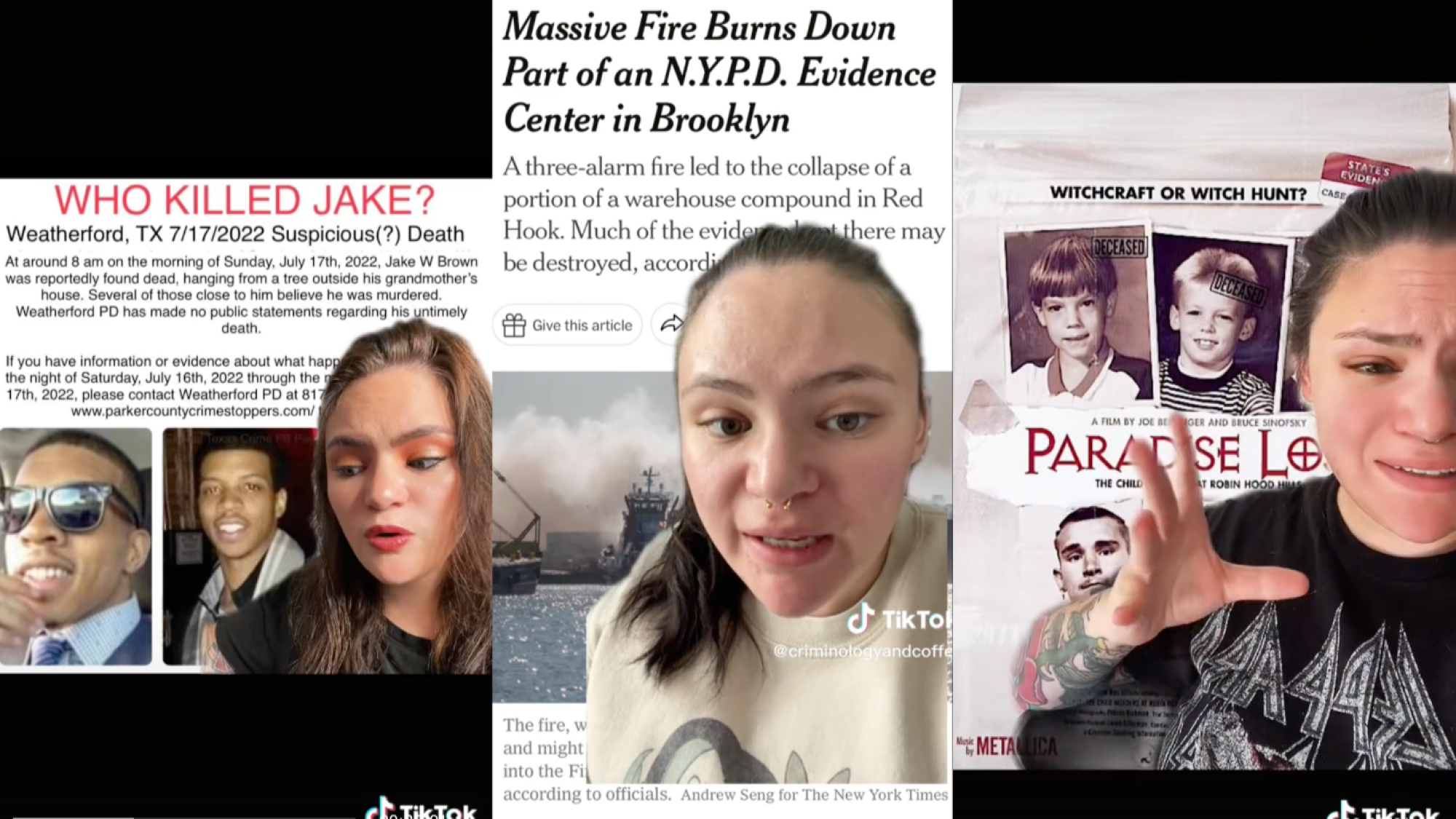
Credit: Screenshot TikTok/ @CriminologyAndCoffee
“Netflix makes everyone think they work for the FBI,” says Rebekah T, creator of Criminology and Coffee and the co-host of the Doctor Crimepodcast. (To say she’s not wrong would be an understatement.) This TikTokker’s focus is the victims, but she’s also dedicated to dispelling myths about true crime, including the “zip tie on the door handle” rumor that was perpetuated by another TikTok video. There’s a wealth of other educational content, including information on unsolved cases and missing persons, as well as some much-needed calling-out of bizarre true crime phenomena — like people conducting seances at crime scenes. (Yes, you are reading that correctly.)
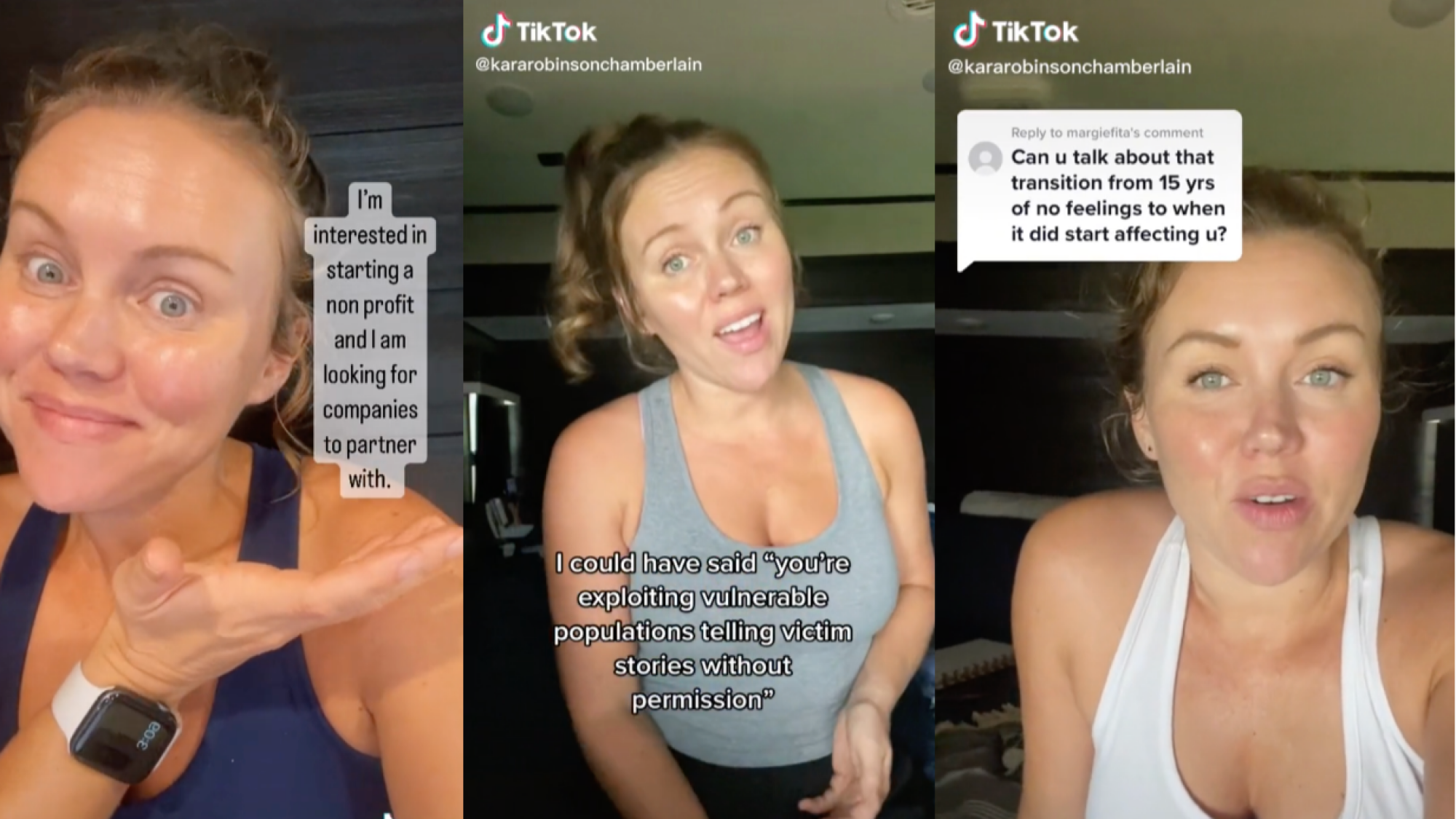
Credit: Screenshot TikTok/ @KaraRobinsonChamberlain
In 2002, 15-year-old Kara Robinson Chamberlain was kidnapped from her best friend’s front yard in Columbia, South Carolina. She escaped and led police to her captor, who was later revealed to be a serial killer. Now in her mid-thirties, Robinson Chamberlain’s TikTok account is a space for education; check out her videos on how to talk to kids about sexual abuse, victim compensation funds, the treatment of missing teenagers by law enforcement, as well as mental health and support for victims of violent crime. Even if you’re on the fence about those videos in which people apply makeup while talking about uncomfortable things, watch Robinson Chamberlain tells us about her true crime industry “icks” while applying foundation.
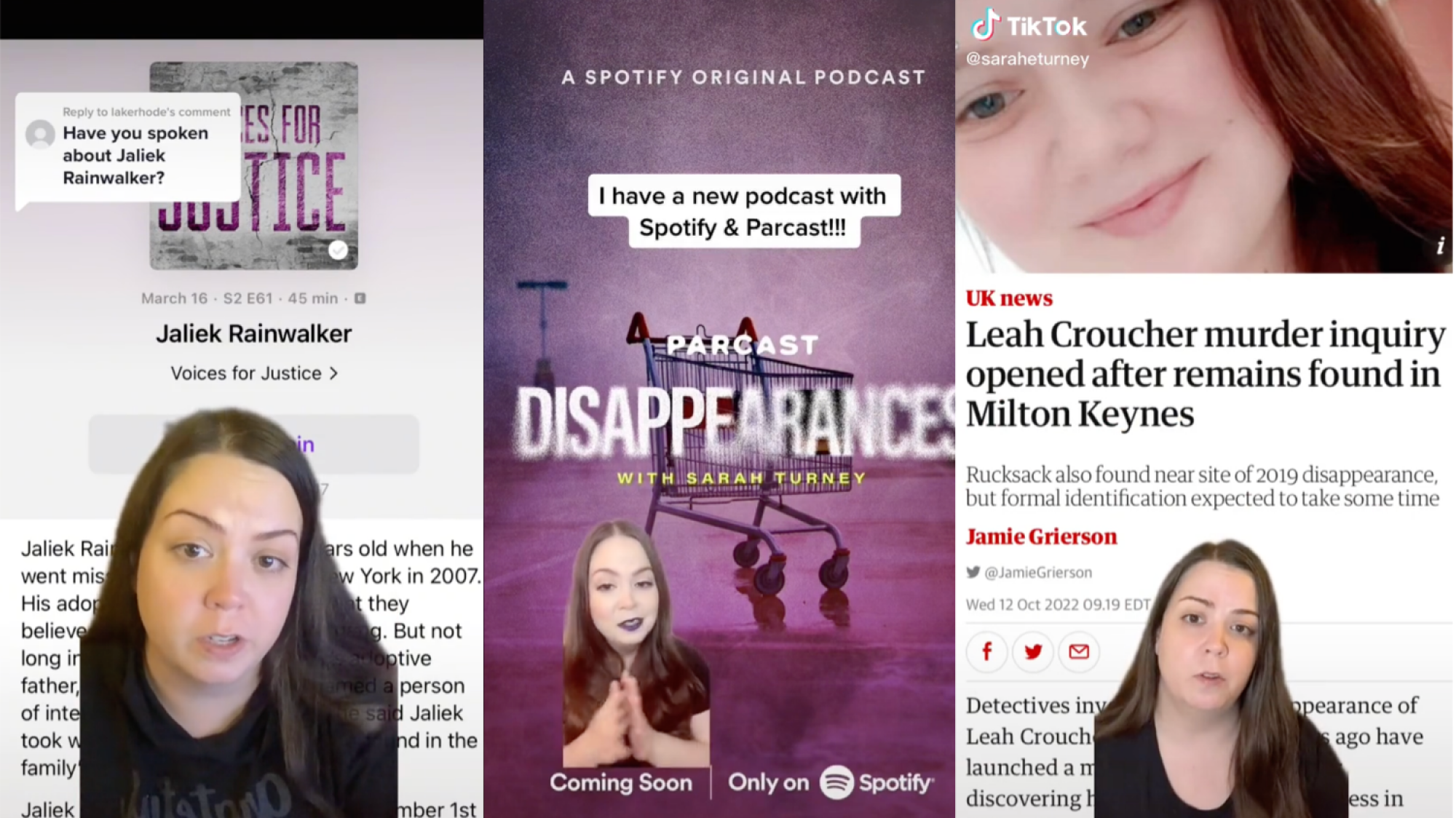
Credit: Screenshot TikTok/ @SarahTurney
After Alissa Turney disappeared from Phoenix, Arizona, in 2001 at the age of 17, her stepsister Sarah took it upon herself to get some answers. Sarah didn’t even hesitate when it looked like her own father (and Alissa’s stepfather) Michael was guilty of Alissa’s murder. (He was indicted for Alissa’s murder in 2020.) Sarah Turney began her excellent podcast Voices for Justice in 2019, with Alissa’s then-unsolved story at the center of the first season. She’s since gone on to cover other unsolved cases, as well as advocating on behalf of victims and their families. She also happens to be great at TikTok. Hers amplifies missing person cases, gets real about mental health, and airs her frustrations about the true crime community, including the exploitation of families by creators… And then there’s her potentially haunted attic.
SEE ALSO: Untangling true crime: Inside the ethics of Hollywood’s greatest guilty pleasure

Credit: Screenshot TikTok/ @TraumaMommaMoe
In August of 2022, Buzzfeed published a piece on TikTok creators whose family members had been murdered and their stories made into TV shows. One of those featured in the article was Mariah Day, whose mom, Betsy Faria, was killed by Pam Hupp in 2011. After NBC’s mini-series The Thing about Pam came out this past summer, Day began using TikTok to informally respond to the series and its viewers, as well as to share what it’s like to live through such a traumatic loss. Day’s TikTok is also a place where viewers can learn about who Betsy Faria really was — a feisty, determined lady who continues to make an impact.
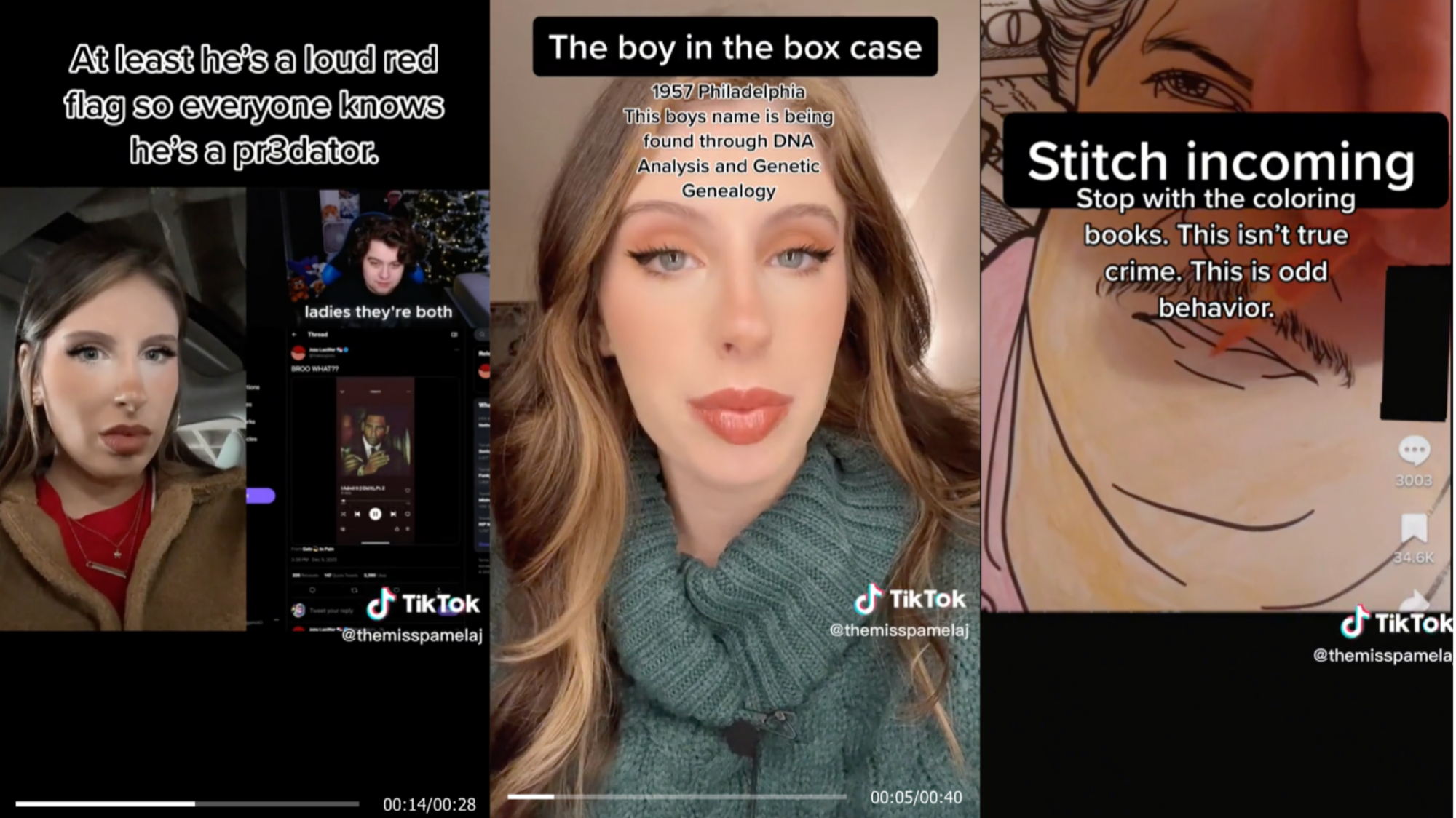
Credit: Screenshot TikTok/ @TheMissPamelaJ
In July 2022, Pamela posted a video on her TikTok asking her followers what they thought about creators benefiting financially from true crime stories. The video went viral, creating a larger conversation about respect for true crime victims and their families. “This shit is getting ridiculous,” says Pamela, against a background photo of a Richard Ramirez keychain. In a video about serial killer merchandise, including a makeup bag with pictures of Jeffrey Dahmer, Charles Manson, Ted Bundy, and the like, she calls out people who would buy such things. Then, she clarifies that true crime exploration should be about figuring out the bigger picture, and above all, respecting the families of the victims. In her videos, she takes to task those who romanticize and sexualize serial killers, and ignore the victims and their loved ones, urging us all to “do better” and consider what’s behind our consumption of true crime.
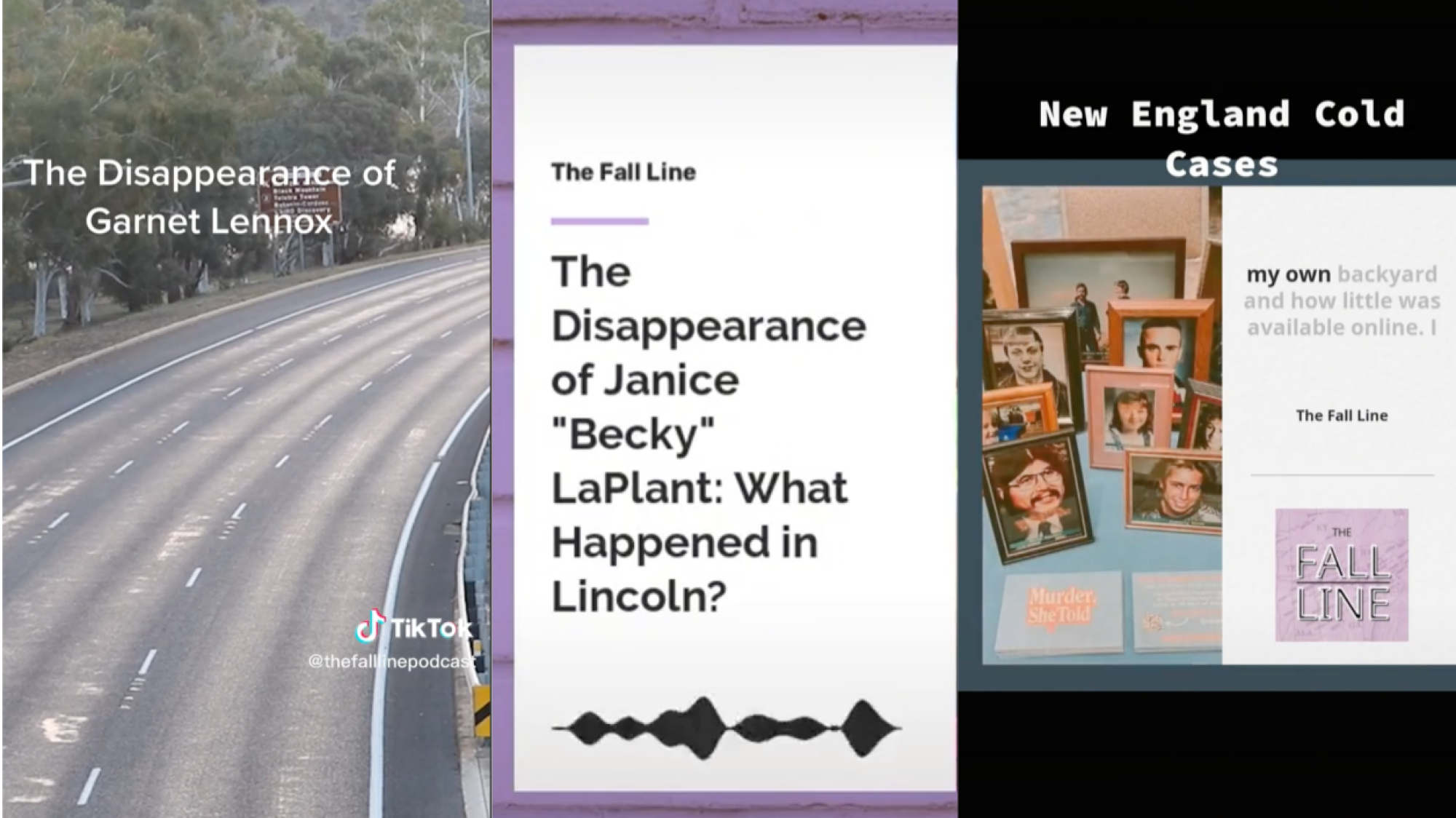
Credit: Screenshot TikTok/ @TheFallLinePodcast
If you haven’t listened to The Fall Line in podcast form, go and do it. Also subscribe to their TikTok, where you’ll find tons of videos about under-covered cold cases from the Southeastern United States, as well as interview sneak peeks and the answers to questions about crime you didn’t know you had: What qualifies a case as cold? How do cadaver dogs do their jobs? Are people who are wrongfully convicted compensated in any way? On both the podcast and its associated TikTok, The Fall Line does what all good true crime media should do — it puts the spotlight on the victim and keeps it there.
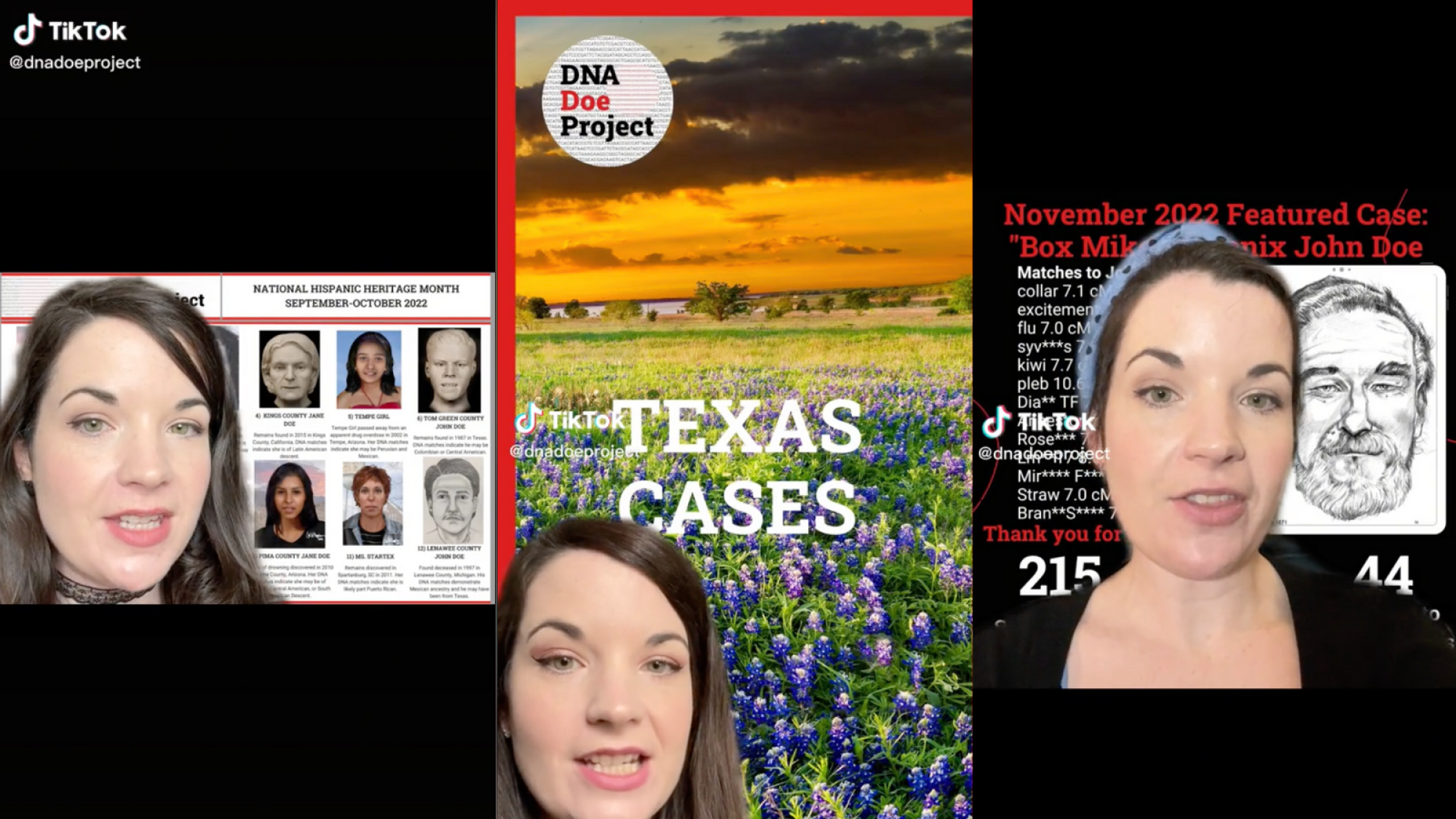
Credit: Screenshot TikTok/ @DNADoeProject
The DNA Doe Project is a non-profit organization that uses genetic genealogy (DNA testing and profiling that infers the genetic relationship between people) to identify Jane and John Does, i.e. the unidentified remains of people who may have been the victims of crimes or accidents. Some TikToks focus on the different Doe cases in their system, while others announce when someone has been identified, share the stories of their volunteers, or even offer tips on how you can become an investigative genetic genealogist yourself.

Credit: Screenshot TikTok/ @MauraMurrayMissing
“Maura Murray Missing” is the TikTok account of Julie Murray, whose sister, Maura, disappeared in 2004 after her car crashed on a road in New Hampshire. Maura’s case has been the subject of podcasts, documentaries, and wild amounts of speculation, but it still remains unsolved. Julie answers questions about her sister’s case, but her TikTok also offers a glimpse into what it’s like to have your loved one vanish and stay vanished. It means living amidst rumors and victim-blaming, and coping with being at the center of one of the most publicized true crime cases in recent history.












